Way before icon Barbie got the Hollywood treatment, she was ‘born’ with Jewish roots
From her creation by unconventional entrepreneur Ruth Handler to her inclusivity and ability to adapt with the times, the famous doll bears some trademarks of the Tribe.
(Times of Israel) – She’s got 250 careers and counting, perpetually arched feet and a Dream House. And on July 21 she’s poised to slide behind the wheel of a pink-and-white convertible and drive off into the “real world” in Greta Gerwig’s upcoming live-action film.
She is of course none other than Barbie — the 11.5-inch, wasp-waisted creation of Ruth Handler, a Jewish businesswoman who bucked social conventions.
Dressed in a zebra-striped swimsuit, the doll debuted at the American Toy Fair on March 9, 1959 — a time when American Jews, facing rampant discrimination, were wrestling with questions about assimilation. In many ways, Handler channeled her own ambivalence into Barbie, for the doll became as much a symbol of all-American, perky whiteness as it did of female empowerment.
“Ruth Handler is to dolls as Ralph Lifshitz is to Americana clothing and Irving Berlin is to Christmas carols. Whether they were conscious of it or not, they all had ambivalent relationships to the idea of the white picket fence America — but they also helped create the image of the white picket fence America,” said Emily Tamkin, author of Bad Jews: A History of American Jewish Politics and Identities.
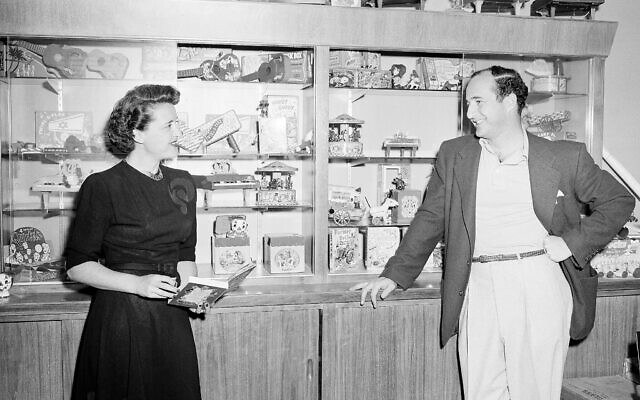
Born in 1916, Handler was the youngest of 10 children born to Yiddish-speaking Polish-Jewish immigrants. Her father, Jacob Mosko, was a blacksmith who deserted the Russian Army. Her mother, Ida, was illiterate. When Handler was six months old her mother got sick and was unable to care for her. Handler’s older sister Sara stepped in and raised her.
At 19, Handler dropped out of college and drove from Denver to Hollywood in her Ford Coupe. She moved into an apartment with her friend and landed a job at Paramount Pictures.
She married her high school sweetheart, an art student named Eliot Handler, in 1938. The two made their first foray into the toy business making die-cast models of the Douglas DC-3 airplane, which Douglas Aircraft gave as corporate Christmas presents.
Six years later the Handlers, together with their friend Harold “Matt” Matson, co-founded Mattel, Inc. Matson sold his share in 1946 and Ruth stepped in to become the company’s first president.
According to several biographies, Handler conceived of the idea for Barbie while watching her daughter Barbara — the doll’s namesake — play with paper dolls. She further honed her idea during a 1956 trip to Switzerland where she saw Bild Lilli, a shapely female fashion doll based on an adult comic strip character.
With her impossibly long and bendable legs, prominent breasts, and vast array of grown-up outfits, Barbie was, by Handler’s design, the antithesis of the baby dolls that conditioned girls for marriage and motherhood.
“This was a radical idea, that the little girl would no longer play mama. It was a transgressive thought in Jewish culture back then. The Jewish mother is such an idea in our culture,” said Letty Cottin Pogrebin, a founding editor of Ms. Magazine and Jewish feminist writer.
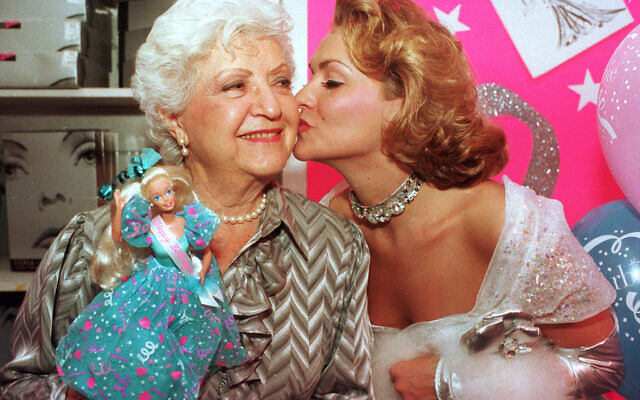
Susan Shapiro, the author of Barbie: 60 Years of Inspiration, posits that the doll is the original feminist.
“She captured the imagination of girls then, and still does, because it’s rare where a woman is the star. When she came out, women still had to have their husband’s permission to get a credit card or a bank account. Women were in the shadow of men,” said Shapiro, who has 68 Barbie dolls and is a professor of writing at the New School.
But Barbie stood in no one’s shadow, Shapiro said.
“She [Barbie] didn’t have to ask permission from a husband, a rabbi, or a father for anything. And that was also Ruth Handler’s life. She didn’t ask for permission for anything,” Shapiro said.
As Handler, who died in 2002 at the age of 85, wrote: “Barbie always represented that a woman had choices.”
She could be a doctor or a farmer, an astronaut or a mathematician. She could have her own car. She could live alone or with friends. She could live in a house or a camper. She could have a boyfriend, Ken, but she didn’t have to have a husband.

Trailers for the film, which will be released July 21, suggest that Barbie gets exiled from Barbieland for being a less-than-perfect doll. In short, she has questions about her role and the meaning of happiness. And, as Pogrebin said, the idea of questioning is central to Judaism.
“I think the movie is going to be a sort of midrash on feminism,” Pogrebin said, using the Hebrew term for the rabbinic exposition on the Bible.
Even so, Pogrebin is hard-pressed to call the doll a symbol of feminism. After all, the doll’s first job was teen model.
Since Mattel introduced Barbie 64 years ago, it has worked to diversify the line.
In 1968, the company introduced a Black doll named Christie. Yet, consigned to being Barbie’s supportive friend, she was not an official Barbie doll. That didn’t happen until the 1980s.
It wasn’t until 2016 that Mattel launched the Fashionista line, which includes Barbies of different body shapes, complexions, and abilities. Its first hijab-wearing Barbie doll, modeled after US Olympic saber fencer Ibthihaj Muhammad, was released in 2017.
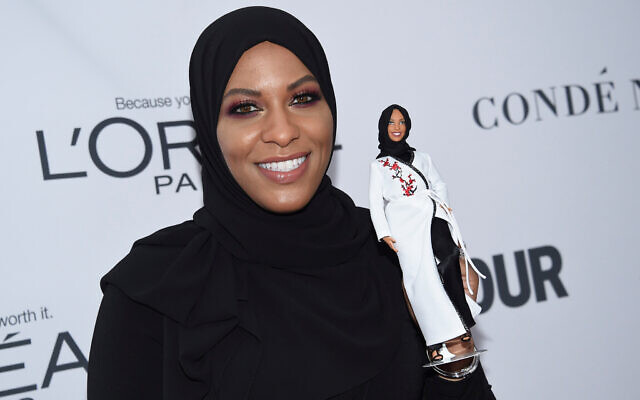
Yet, even as Mattel continues to expand the brand — in May it added a Barbie with Downs’ Syndrome — the most popular Barbie remains the 1992 “Totally Hair Barbie.” More than 10 million of the dolls with the Rapunzel-like golden tresses have been sold to date.
That doesn’t mean there haven’t been Barbie dolls fashioned after famous Jewish women. The company sold a Diane von Furstenberg doll in 2006, and in 2020 it released one modeled after the gold medal-winning gymnast Aly Raisman.
In keeping with the idea of Barbie having choices, Jen Taylor Friedman, an Orthodox Jewish artist, created “Tefillin Barbie.” The doll, which is available for purchase on Etsy, comes wrapped in prayer shawl and tefillin — or phylacteries — and holds a prayer book.
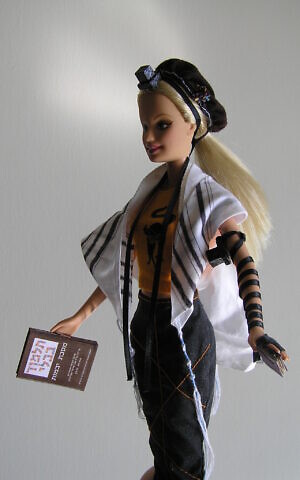
“Mattel’s Halloween Hip Barbie 2006 came with a lovely frum denim skirt, so she looked like most of my friends. Accordingly, I figured she ought to be wearing tefillin, just like my friends,” says Friedman’s website, using the Yiddish term for religiously observant.
And while a Jewish celebrity depicted as a Barbie doll isn’t technically a Jewish Barbie, it doesn’t matter Tamkin said, “because in a way she is already Jewish. She was created by a Jewish woman and named for her Jewish daughter.”
Pogrebin, however, doesn’t agree with the notion that Barbie is a Jewish doll because Handler was Jewish. But she does see something Jewish in the way Handler and Mattel adapted to changing times.
“They did what Jewish people have done for thousands of years: accommodate to the dominant culture in order to survive. To fit in you have to re-invent yourself while hanging on to who you are at the essence. Mattel did that and Handler did that,” Pogrebin said.


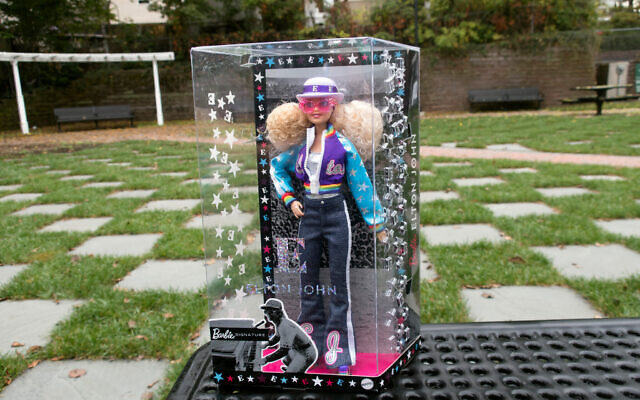
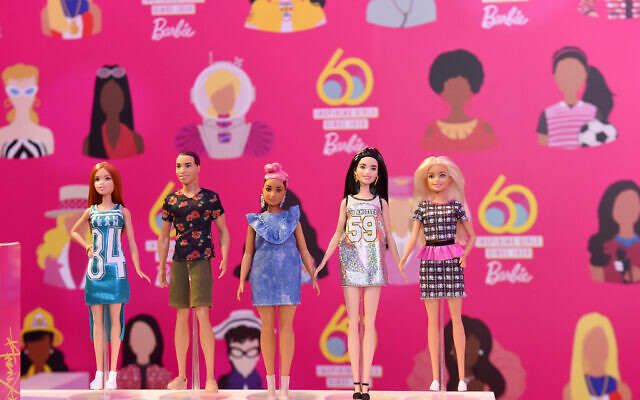
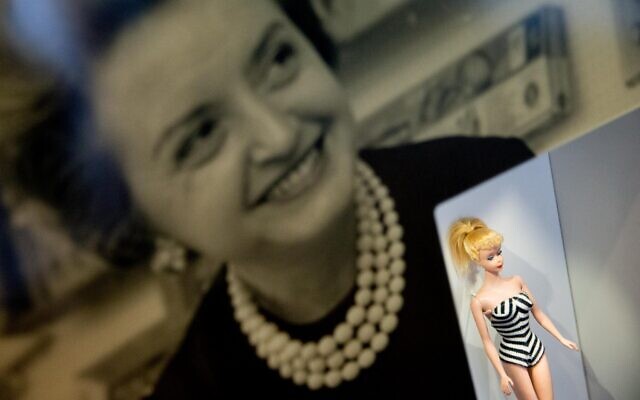
comments